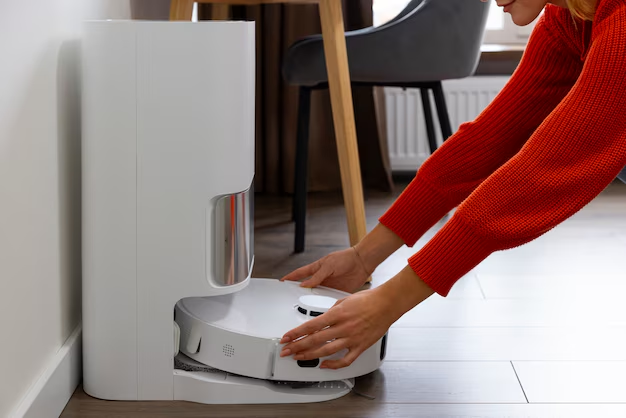Optimizing the Chill: How to Adjust Your Samsung Refrigerator Temperature Effectively
Your refrigerator is more than just a kitchen appliance; it's a vital part of your home that ensures food freshness and safety. Adjusting the temperature of your Samsung refrigerator might seem straightforward, but it's essential to get it just right to keep perishables fresh and extend their shelf life. Whether you’ve just brought home a new model or are trying to optimize the performance of an older fridge, understanding how to set the right temperature is crucial for food preservation. Let's delve into the nuances of managing your Samsung refrigerator's temperature settings to ensure your groceries stay fresher for longer.
🍽️ The Importance of Proper Temperature Settings
A refrigerator's primary role is to slow the growth of bacteria and mold, vital for keeping food safe to eat. Setting the appropriate temperature not only ensures food safety but also maintains the taste and texture of your groceries.
- Food Safety: Keeping your refrigerator at the right temperature slows the growth of bacteria, reducing the risk of foodborne illnesses.
- Energy Efficiency: An optimally set temperature ensures that your refrigerator isn't overworking, which can save energy and reduce electricity bills.
- Food Longevity: Certain foods are sensitive to temperature changes, and finding the right setting helps maintain their freshness longer.
📊 Recommended Temperature Settings
For most Samsung refrigerators, the ideal temperature is typically around 37°F (3°C) for the fridge and 0°F (-18°C) for the freezer. These temperatures provide the best balance between food preservation and energy efficiency.
Understanding Your Refrigerator Model
Different models might have different ways of adjusting temperatures, but most modern Samsung refrigerators come with a digital display that makes controlling the temperature straightforward. Let’s explore how to adjust these settings.
🔧 Adjusting the Temperature on a Samsung Refrigerator
Digital Temperature Control
- Access the Control Panel: Open your fridge and locate the temperature control panel, usually situated at the front top of the food compartment.
- Set the Temperature:
- Fridge: Press the button marked “Fridge” on the display. Each press typically changes the temperature in increments of one degree.
- Freezer: Similarly, press the “Freezer” button to adjust the desired temperature.
- Monitor the Adjustment: Allow the fridge a few hours to adjust to the new temperature setting. You can use a separate thermometer if you want to verify the internal temperature accuracy.
Manual Dials or Sliders
If your Samsung refrigerator has manual dials or sliders instead of a digital panel:
- Locate the Dial: Usually found inside the fridge near the internal light.
- Set the Temperature: Smaller numbers generally mean a warmer temperature, while higher numbers indicate a cooler setting. Adjust accordingly.
- Check the Results: Like digital controls, manual adjustments should be given a few hours to stabilize.
🤔 Common Issues and Solutions
Temperature Fluctuations
If your fridge temperature doesn’t stay consistent:
- Check the Door Seals: Ensure the door seals are not cracked or deformed, as this can cause cool air to escape.
- Avoid Overloading: Too many items can restrict airflow inside the fridge, leading to uneven cooling.
Condensation Inside the Fridge
Condensation might result from:
- Frequent Door Opening: Try to minimize the number of times and duration the fridge door is open.
- Hot Foods: Allow hot foods to cool down before placing them in the fridge.
🌟 Practical Tips for Optimal Refrigeration
- Positioning is Key: Ensure your refrigerator is positioned away from direct sunlight and heat sources like ovens to prevent it from working harder than necessary.
- Organize Wisely: Store fruits and vegetables in their designated compartments and avoid blocking vents with food items for better airflow.
- Regular Maintenance: Clean coils and replace water filters as recommended by Samsung to keep your fridge running efficiently.
🌡️ Temperature Settings Table for Quick Reference
| Component | Recommended Temperature |
|---|---|
| Fridge | 37°F (3°C) |
| Freezer | 0°F (-18°C) |
📌 Key Takeaways for Samsung Refrigerator Owners
- Optimal Temperatures: Aim for 37°F in your fridge and 0°F in your freezer for best results.
- Regular Monitoring: Periodically check the internal temperatures, especially after restocking.
- Energy Efficiency: Keep your refrigerator well-maintained for consistent performance without excessive energy use.
- Proactive Adjustments: Adjust settings based on seasonal changes or if you're storing more sensitive foods.
Understanding and adjusting your Samsung refrigerator's temperature settings can profoundly affect your appliance's efficiency and the longevity of your food. By maintaining ideal temperatures and employing best practices for storage and usage, you ensure peak performance and energy savings. With this guide, you are well-equipped to manage your Samsung refrigerator’s settings like a pro, making sure it continues to serve your household needs effectively.
